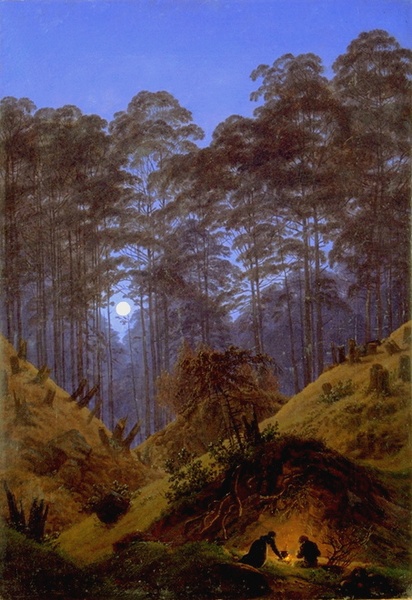The Barrows Hunger - The Tomb of the Lawmaker
My next barrow in my The Barrows Hunger project for the Dyson Logs Jam is complete. This is the barrow of the oldest of the Lernaean monarchs, the Lawmaker. Not that he was a real guy or anything - for those just joining, these barrows are the heads of subterranean hydra, disguised by strange biological processes to resemble tombs ripe for the plundering.
Fortunately, this head of the hydra is dead. It was the first to die, in fact, many years ago. That doesn't mean its natural camouflage entirely gave up though. I took this opportunity to introduce the first adversary to the adventure, and give it some hooks that might clue the players at least partially in on what's going on here. I decided to go with Cairn for the system again, as it's what I know and I enjoy writing for and running it. See you in the next barrow!
- Low to the ground, as if worn down over the ages
- Loose slab over entryway, strangely off-white stone and narrows from top to bottom
- A tooth shed from the prime head of the Hydra. It died first, of old age. The others will follow, inevitably.
- Short hallway, stairs lead down at an angle. 3 styluses for cuneiform resting in a niche.
- Each stylus can be used once to carve the runic representation of a spell into one’s flesh, copied from a scroll or spellbook. The carver chooses a trigger - anything from saying a phrase to seeing a certain shade of green. The spell is cast every time the trigger condition is satisfied, regardless of intention. When the spell is cast, it siphons some of the host’s energy, dealing STR damage equal to twice the spell’s level.
- Low-ceilinged room with dozens of shattered slabs of brownish gray clay scattered across the floor. None are whole, and the fragments of script on them match no known language. There are three piles where the fragments rise knee-deep.
- The script has no meaning - they are random symbols generated by the biological processes of the hydra. Any attempts to read them magically only give the caster an impression of the tracks of a sidewinder in sand.
- The piles hide three autonomous globules of semi-congealed hydra saliva. They are looking for a form to take. They rouse as one if any is discovered in its pile.
- Saliva Glob - 6 HP 1 Armor 14 STR 4 DEX 1 WIL
- Attempt to latch onto interlopers and transform into a facsimile of character-appropriate armor or gear.
- Once they’ve hardened (2 rounds after attaching) they are immune to non-magical damage. A character with a transformed Glob attached is deprived.
- Once a Glob has taken critical damage, it will detach from its target and no longer attempt to harden. A chemical reaction bubbles through its bulk, and 3 turns later it explodes (2d12 blast)
- In a crawlspace to the north, two adventurer’s corpses. The faint reek of past death.
- A body entirely encased in brownish-gray plate armor that covers it from head to toe. Though the armor is shaped around the crumpled limbs, there are no apparent joints or even breathing holes in the impenetrable shell. It’s nothing more than bones inside, and 30 gold pieces in the ruins of a leather satchel. They match the strange shape of those in the museum.
- A not-entirely desiccated magic user’s corpse. It has a clay wand clasped tightly in its hand - on further inspection, the handle twists around the corpse’s fingers to ensure it’s not dropped in death. The remnants of a voluminous scarf (made of clay) wrap around the corpse’s neck and over its shoulders. There’s chunks of the clay in the corpse’s open mouth, and brownish-gray stains down the front of its waistcoat. They tried to chew their way free.
- Trying to take any of the hydra-generated items from the corpses causes the strange clay-like things to flake and crumble. This rouses the Globs in the room behind.
- In the room to the west, a statue of a faceless old man with flowing hair, his arms outstretched as if holding something. Six niches in the walls each hold an enormous slab, covered with neat lines of script.
- Again, the script means nothing. A magical reading of the script gives the reader a sense of gnawing, desperate, single-minded hunger.
- Putting a slab into the statue’s arms causes him to pitch forward and shatter on the floor, revealing a near-vertical tunnel leading down into the earth. A gout of rancid, rotting gas burbles out, choking oxygen out of the room.
- If they’re stupid enough to try to jump down the hole, they slide at an almost-freefall for a very long time. Long enough to asphyxiate before they hit the curdled stomach acid below. If they somehow manage to descend without suffocating or dying on impact, they’ll live to wish they hadn’t been so damned clever.





Comments
Post a Comment